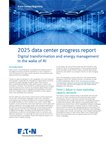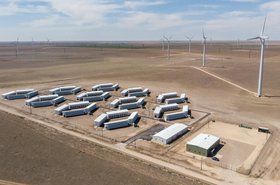This article was written in collaboration with Dallas associate Sean Dao, London counsel Bader Thabti, and London associate Joshua Hayes.
AI technologies are being increasingly adopted on the commercial and consumer side, driving unprecedented computing and thus power demands. This explosive growth presents particular challenges for data center infrastructure development. AI-ready data centers differ substantially from their traditional counterparts, requiring significantly more power density, sophisticated cooling systems, and enhanced reliability standards to support intensive computational workloads and consistent power to operate them.
These specialized facilities face multifaceted challenges, particularly in securing appropriate power purchase agreements (PPAs), addressing grid capacity limitations, and navigating increasingly complex permitting processes. We examine the critical legal and infrastructure considerations that organizations must address to develop and operate an AI-ready data center in today’s regulatory environment.
Key takeaways
- AI-capable data centers require significantly more power than traditional facilities, creating unprecedented demand for energy resources and infrastructure upgrades.
- PPAs are critical instruments for securing reliable energy, requiring careful negotiation of pricing terms, curtailment provisions, and interconnection requirements specifically tailored to AI operations.
- Aging power infrastructure and limited grid capacity present significant challenges that can be addressed through onsite power generation, battery storage systems, and collaborative approaches to financing upgrades.
- Regulatory frameworks at state and federal levels are evolving to address AI’s impact on power systems, requiring proactive engagement with regulatory bodies and flexible development strategies.
- Successfully developing an AI-capable data center demands effective coordination across financing, energy, and technology law.
Rising energy demand
Training large language models (LLM) and other advanced AI systems requires continuous high-performance computing operations that can extend over weeks or even months. This sustained computational intensity creates energy demands that traditional data centers cannot accommodate. Specialized hardware accelerators that enable AI workloads, such as GPUs and Tensor Processing Units (TPUs), generate substantially more heat than standard server equipment. This increased thermal output necessitates more sophisticated and energy-intensive cooling solutions. As reported by The Wall Street Journal, global data center energy use currently sits at around one to 1.5 percent of electricity demand, with projections indicating this figure could double as AI deployment continues to scale.
Industry leaders are addressing these challenges by implementing advanced energy management systems designed to optimize power consumption. Simultaneously, hardware manufacturers are concentrating on developing more energy-efficient infrastructure components and computing chips that maintain performance while reducing power usage requirements. Some cutting-edge facilities are implementing liquid cooling technologies that offer greater efficiency than traditional air-based systems, particularly for the high-density server configurations that run AI applications.
Strain on power infrastructure
The extraordinary energy requirements associated with AI data centers require developers to make strategic location decisions based on access to reliable and cost-effective energy sources. Many developers are prioritizing regions with abundant natural gas resources, while others are investigating emerging technologies such as small modular nuclear reactors to ensure consistent power availability under all conditions. Concentrated demand by a data center creates pressure on utilities and regional grid operators, and transmission coordinators, such as PJM in the eastern United States and ERCOT in Texas, are experiencing a surge in connection requests that exceed historical patterns.
America’s aging power infrastructure further complicates these challenges. Upgrading transmission and distribution networks is a slow process and requires substantial capital investment, raising important questions about the allocation of financial responsibility. Utilities frequently seek contributions from corporate ratepayers to avoid placing a substantial burden on residents, while technology companies resist bearing disproportionate financial burdens. CNBC reports that OpenAI is evaluating 16 states, including Texas, for potential data center campuses tied to its Stargate project, with power availability its primary consideration.
Forward-thinking organizations are addressing these infrastructure limitations through innovative approaches, including onsite power generation facilities, large-scale battery storage systems, and collaborative models for financing infrastructure improvements.
PPAs and development considerations
PPAs have emerged as essential instruments for data center operators seeking to secure reliable and predictably priced energy over extended periods. These agreements typically extend from five to 20 years and are structured as either Physical PPAs or Virtual PPAs. Physical PPAs establish arrangements for the delivery of energy directly from the producer to the buyer. In contrast, Virtual PPAs are financial instruments typically with a renewable energy developer: no physical energy is delivered and, instead, valuable energy benefits, such as renewable energy certificates or revenue returns for renewable energy sales, support organizational sustainability objectives.
The pricing mechanisms within these agreements range from fixed pricing structures that provide budgetary predictability to market-indexed rates that reflect broader energy market conditions, to hybrid models that incorporate adjustments based on factors such as inflation indices or fuel cost variations. Multiple external factors can significantly influence a PPA’s value proposition, including transmission constraints, local grid infrastructure capabilities, and regional market price dynamics.
Curtailment provisions, which establish the conditions under which power providers may interrupt service, are critical negotiation points for developers to ensure uninterrupted operation. Interconnection terms address timelines, technical specifications, site studies, and cost-sharing arrangements, and some PPAs incorporate “make-whole” payment provisions to compensate for power supply interruptions. Developers need to balance reliable power connection and receiving financial compensation for a lack of power with contractual obligations to customers leasing server space. Delays in interconnection processes can materially affect project schedules, financing arrangements, and operations timelines, and a developer’s financing structure will impact the developer’s ability to provide support to utilities for any necessary infrastructure improvements.
Developers must also ensure they understand a site’s current regulatory environment. The Federal Energy Regulatory Commission (FERC) and Independent System Operators/Regional Transmission Organizations (ISO/RTO) are actively assessing the implications of interconnection impacts, potential reliability risks to existing grid operations, and collocated AI demand (which allows a data center to connect directly to a power source and bypass the traditional grid) as part of their regulatory oversight responsibilities.
Simultaneously, state regulatory authorities are recalibrating their approaches to ratemaking and economic development frameworks to better accommodate AI’s distinctive infrastructure requirements. In Texas, pending legislation aims to address the challenges presented by AI data centers’ energy consumption patterns, potentially establishing new frameworks for power allocation and infrastructure development planning.
Legal cross-discipline issues
Developing and operating AI-ready data centers necessitates specialized legal expertise across multiple disciplines. Financing attorneys provide guidance in structuring capital arrangements that support data center development, which requires substantial upfront investment before generating any operational revenue. Capital arrangements must incorporate sufficient flexibility to accommodate the rapid evolution of AI technology availability and unique power supply challenges at an individual site.
Energy lawyers guide PPA negotiations, facilitate utility discussions, manage interconnection filings with relevant authorities, and resolve rate disputes when they arise. Their specialized work ensures that facilities maintain access to reliable, cost-effective power resources that meet operational requirements under all anticipated conditions. As regulatory approaches to AI infrastructure continue to evolve, energy counsel must remain current on emerging policies and their potential impact on both existing and future facilities.
Technology and intellectual property specialists address essential operational aspects of data centers, including complex licensing arrangements, service level agreements, comprehensive data governance frameworks, and cross-border data flow compliance strategies. These legal considerations ensure that data centers can meet customer demands and maintain appropriate protections for proprietary technologies and processes.
An integrated legal approach enables organizations to navigate complex regulatory landscapes while maintaining operational flexibility and optimizing financial structures for both near-term development and long-term operation.
Conclusion
The unprecedented energy requirements of AI-enabled data centers are fundamentally transforming the landscape of power and technology infrastructure development and regulatory frameworks. As the development environment evolves, maintaining adaptive, forward-looking legal strategies will be essential for organizations seeking to maintain a competitive advantage.
Read the orginal article: https://www.datacenterdynamics.com/en/opinions/powering-the-ai-revolution-legal-and-infrastructure-challenges-for-data-center-development/





